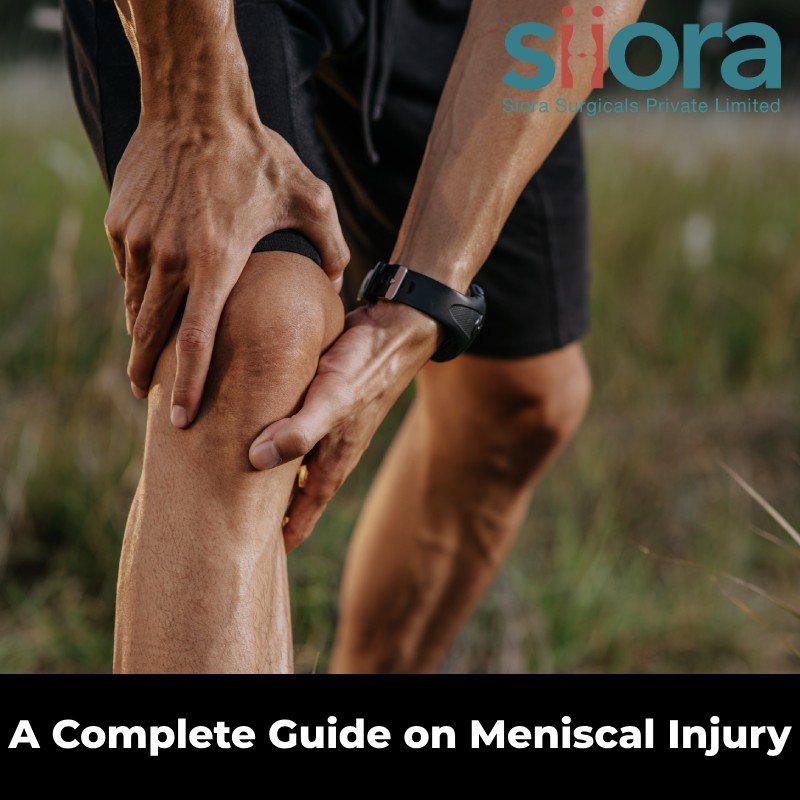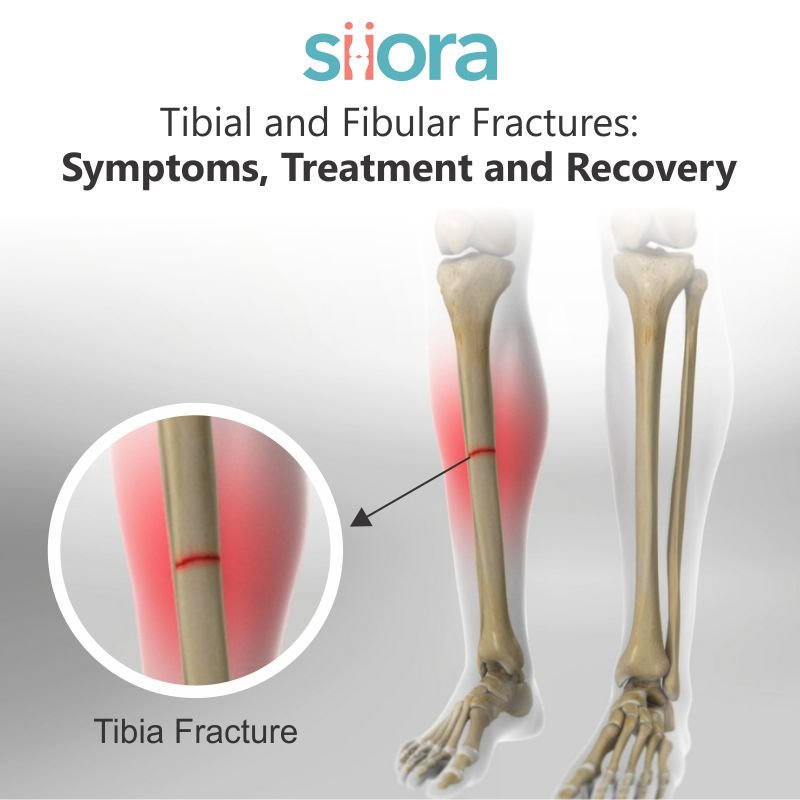Meniscus is a crescent-shaped cartilage present in the knee joint. These are rubbery cartilages that provide cushioning in the knee joint. Menisci plays a vital role in stabilizing the knee and helping with the easy movement of the joint. They help absorb shock that occurs while walking and performing other weight-bearing activities. This cartilage also helps to distribute body weight across the joint. In addition to their mechanical role, the menisci also aid in lubricating the joint and improving the congruence between the articulating surfaces. They enhance joint stability by deepening the surface area available for contact and preventing excessive movement that could lead to meniscal injury.
Meniscus is susceptible to injury and any injury occurring in the menisci can make the knee joint unstable while causing pain, swelling, and stiffness. Meniscus injury can be severe depending on the cause and this will decide the type of treatment.
In this post, we will discuss meniscal injury in detail.
What is Meniscal Injury?
Meniscal injury refers to damage or tears in one or both menisci, which are the crescent-shaped cartilage structures located in the knee joint. These injuries commonly occur during sports activities, especially those that involve twisting, pivoting, or sudden changes in direction. Such sports activities include football, jumping, volleyball, and soccer. However, meniscal injuries can also result from degenerative changes or wear and tear over time. It is a painful condition that restricts the range of motion of the joint. Restrictions depend on the severity of the injury. Let us have a brief look at the cause of the meniscal injury.
What Are the Causes of Meniscal Injury?
Meniscal injuries can occur due to various causes, ranging from acute traumatic incidents to gradual degenerative changes over time. Understanding the causes can help individuals take preventive measures and reduce the risk of meniscal injury. Here are some common causes:
Sports activities
Meniscal injuries are frequently associated with sports that involve quick direction changes, pivoting, or sudden stops. Sports such as football, basketball, soccer, and skiing pose a higher risk. Twisting or hyperextending the knee during these activities can lead to meniscal tears.
Trauma or accidents
Direct trauma to the knee, such as a hard impact or a forceful blow, can cause meniscal injury. This can happen during falls, collisions, or accidents, such as a car accident. The force exerted on the knee joint can result in a tear or rupture of the meniscus.
Aging and degenerative changes
Over time, the menisci can undergo degenerative changes, becoming more prone to injury. As individuals age, the cartilage in the menisci may weaken, thin out, or become less resilient. These changes can make the menisci more susceptible to tears, even with minimal force or stress on the knee joint.
Repetitive stress or overuse
Activities or occupations that involve repetitive knee movements or excessive stress on the joint can gradually wear down the menisci, leading to injury. This can include activities like squatting, kneeling, or heavy lifting, which place prolonged strain on the knees.
Pre-existing knee conditions
Certain knee conditions, such as ligamentous instability (e.g., ACL tears), patellar dislocation, or osteoarthritis, can increase the risk of meniscal injury. These conditions can alter the biomechanics of the knee joint, placing additional stress on the menisci and making them more susceptible to tears.
It is important to note that the causes of meniscal injuries can vary from person to person, and multiple factors may contribute to the development of a meniscal tear. Maintaining proper conditioning, using appropriate protective gear, practicing proper techniques during sports activities, and seeking timely treatment for knee conditions can help reduce the risk of meniscal injuries.

What is the Diagnosis for Meniscal Injury?
The diagnosis of a meniscal injury involves a combination of medical history, physical examination, and imaging tests. A thorough evaluation is essential to accurately diagnose the presence, location, and severity of a meniscal tear. Here are the common methods used in the diagnosis of meniscal injuries:
Medical history
The healthcare provider will discuss the patient’s symptoms, the mechanism of injury (if applicable), and any relevant medical history. This helps in understanding the context of the injury and identifying potential risk factors.
Physical examination
The healthcare provider will perform a comprehensive physical examination of the knee joint. This includes assessing the range of motion, joint stability, areas of tenderness, and specific tests to elicit meniscal-related symptoms. Special tests, such as McMurray’s test and Apley’s test, may be conducted to provoke pain or clicking sensations associated with meniscal tears.
Imaging tests
Imaging studies are often employed to confirm the diagnosis and visualize the extent of the meniscal injury. The commonly used imaging test is magnetic resonance imaging (MRI). MRI can provide detailed images of the soft tissues, including the menisci, and can accurately identify the location, size, and characteristics of the tear. Other imaging tests, such as X-rays, may be performed to rule out associated fractures or bony abnormalities.
Arthroscopy
In some cases, knee arthroscopy may be recommended for both diagnostic and therapeutic purposes. Arthroscopy is a minimally invasive surgical procedure in which a small camera is inserted into the knee joint through a small incision. It allows direct visualization of the menisci and other structures within the joint, facilitating a precise diagnosis and potential repair or removal of the torn meniscal tissue.
The combination of medical history, physical examination, and imaging tests helps in accurately diagnosing meniscal injuries. A prompt and accurate diagnosis is crucial for determining the most appropriate treatment approach, whether it involves conservative measures or surgical intervention. Seeking medical attention from a qualified healthcare professional is essential for an accurate diagnosis and appropriate management of meniscal injuries.
What is the Treatment for Meniscal Injury?
The treatment of a meniscal injury depends on various factors such as the location, size, and severity of the tear, as well as the patient’s age, activity level, and overall knee health. The treatment options for meniscal injuries can range from conservative measures to surgical intervention. Here are the common approaches:
Non-surgical treatment
For minor meniscal tears or tears that are not causing significant symptoms, non-surgical methods may be recommended. These can include:
Rest and activity modification
Avoiding activities that worsen symptoms and allowing the knee to heal.
Ice and compression
Applying ice packs and using compression bandages to reduce swelling.
Physical therapy
Specific exercises and stretches to strengthen the surrounding muscles and Improve knee stability.
Medications
Non-steroidal anti-inflammatory drugs (NSAIDs) to relieve pain and reduce inflammation.
Surgical treatment
In cases where conservative measures do not provide adequate relief or for larger, more complex tears, surgical intervention may be necessary. The surgical options include:
Arthroscopic meniscus repair
This procedure involves using small incisions and a camera (arthroscope) to guide the repair of the torn meniscus using sutures or anchors. Meniscus repair is typically performed for tears that are on the outer edge of the meniscus and have good healing potential.
Partial meniscectomy
In this procedure, the surgeon trims or removes the damaged part of the meniscus while preserving as much healthy tissue as possible. Partial meniscectomy is often performed for tears that cannot be repaired or for older individuals with degenerative meniscal tears.
Meniscal transplantation
In rare cases where a large portion of the meniscus is removed, a meniscal transplant may be considered. This involves replacing the damaged meniscus with a donor meniscus.
After surgery, rehabilitation through physical therapy is usually recommended to regain strength, flexibility, and functionality of the knee joint. The specific rehabilitation plan will vary depending on the surgical procedure and individual factors.
It’s important to note that the treatment approach may vary for each individual, and the final decision should be made in consultation with a qualified healthcare professional who can assess the specific characteristics of the meniscal injury and the patient’s overall condition.
Siora Surgicals Pvt. Ltd. is one of the oldest orthopedic implant manufacturers in India. Operating for over 3 decades, the company holds expertise in producing a huge range of trauma implants and instruments. Medical-grade stainless steel and titanium are used to manufacture orthopedic devices and are tested against stringent quality parameters before being approved fit for use.








